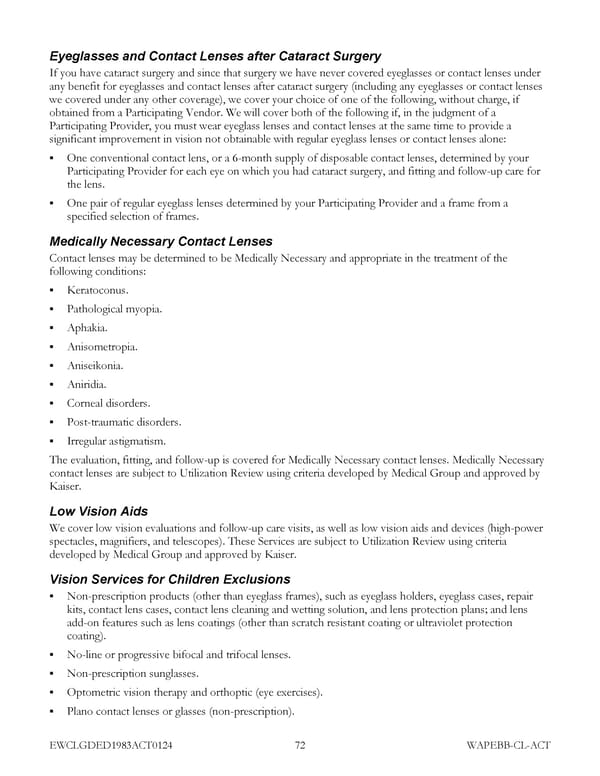Eyeglasses and Contact Lenses after Cataract Surgery If you have cataract surgery and since that surgery we have never covered eyeglasses or contact lenses under any benefit for eyeglasses and contact lenses after cataract surgery (including any eyeglasses or contact lenses we covered under any other coverage), we cover your choice of one of the following, without charge, if obtained from a Participating Vendor. We will cover both of the following if, in the judgment of a Participating Provider, you must wear eyeglass lenses and contact lenses at the same time to provide a significant improvement in vision not obtainable with regular eyeglass lenses or contact lenses alone: One conventional contact lens, or a 6-month supply of disposable contact lenses, determined by your Participating Provider for each eye on which you had cataract surgery, and fitting and follow-up care for the lens. One pair of regular eyeglass lenses determined by your Participating Provider and a frame from a specified selection of frames. Medically Necessary Contact Lenses Contact lenses may be determined to be Medically Necessary and appropriate in the treatment of the following conditions: Keratoconus. Pathological myopia. Aphakia. Anisometropia. Aniseikonia. Aniridia. Corneal disorders. Post-traumatic disorders. Irregular astigmatism. The evaluation, fitting, and follow-up is covered for Medically Necessary contact lenses. Medically Necessary contact lenses are subject to Utilization Review using criteria developed by Medical Group and approved by Kaiser. Low Vision Aids We cover low vision evaluations and follow-up care visits, as well as low vision aids and devices (high-power spectacles, magnifiers, and telescopes). These Services are subject to Utilization Review using criteria developed by Medical Group and approved by Kaiser. Vision Services for Children Exclusions Non-prescription products (other than eyeglass frames), such as eyeglass holders, eyeglass cases, repair kits, contact lens cases, contact lens cleaning and wetting solution, and lens protection plans; and lens add-on features such as lens coatings (other than scratch resistant coating or ultraviolet protection coating). No-line or progressive bifocal and trifocal lenses. Non-prescription sunglasses. Optometric vision therapy and orthoptic (eye exercises). Plano contact lenses or glasses (non-prescription). EWCLGDED1983ACT0124 72 WAPEBB-CL-ACT
 Kaiser Permanente NW Classic EOC (2024) Page 78 Page 80
Kaiser Permanente NW Classic EOC (2024) Page 78 Page 80